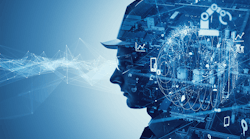Part 1: What and where is edge computing?
Even though digitalization was supposed to push all information via the Industrial Internet of Things (IIoT) to cloud-computing services, its greatest beneficiary may be the humble sensors, instruments, analyzers, I/O and other hardware that generate all the data in first place. Oh sure, IIoT and the cloud will still get reports-by-exception and information for business/enterprise analysis, but the primary focus will be on operations and production, where it should have been all along. However, before you can go the edge and process data, you have to define what it is and where. Read more.
Part 2: Edge computing thrives in increasingly capable, embedded servers
The place where most edge computing happens is in the increasingly capable and embedded servers that process and coordinate all the data coming in from sensors, I/O, PLCs and other devices.When the U.S. Environmental Protection Agency (EPA) asked the City of Lima, Ohio, to reduce its discharges to the local Ottawa River to just five per year, the utility upgraded its 20-year-old, fiber-optic network with a new ring, adopted a fault-tolerant server to maintain uptime, added new switches in its PLC cabinets, virtualized all new servers, added backup and recovery functions, and improved plant-level and network security. Read more.
Part 3: Edge computing provides flexibility for mobile applications
Not surprisingly, once computing and control reach the edge, they don't settle down, but keep right on exercising their newfound flexibility in increasingly mobile applications. To provide water transport, modular tanks and buffer tanks to widespread, changeable fracking sites and their water pits, New Wave Energy Services in Calgary, Alberta, Canada, must have highly mobile operations. Here's how grovv EPIC edge-programmable logic controllers help connect these mobile operations. Read more.
Part 4: How a data separation strategy to edge computing is effective for managing information
Just as migrating from centralized data processing to edge computing allows more freedom and flexibility, it also points to simpler, more effective organizational structures for managing information that can also be consciously adopted by users. Here's how data separation at the edge can help organize data. Read more.
Part 5: Six steps to implement effective edge computing
Because they all have microprocessors, Ethernet ports and software, practically every sensor, instrument, I/O point, switch, gateway, PLC or server is getting simpler to use and maintain. However, even easier-to-use edge devices still require users to learn and understand how to apply them in individual process applications. Here are some basic steps for implementing effective edge computing. Read more.






